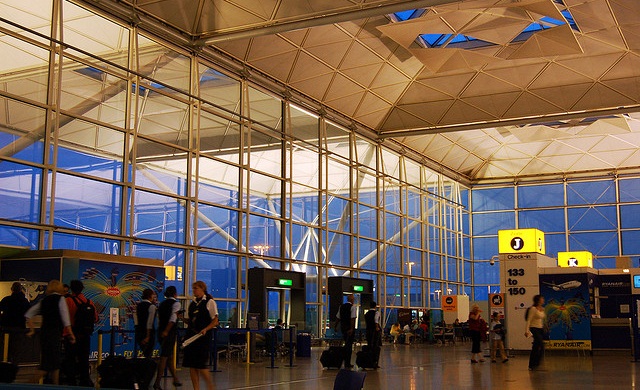In 1984 Richard Santulli bought a small loss-making private jet hire company called Executive Jet Aviation, EJA. He thought it might be useful as a dumping ground for aircraft coming off leasing deals, his main business. Little did he know that he would soon invent a completely new type of business, one that was so successful that Warren Buffett would pay $725m to buy it only 14 years later.

As the new owner of an airplane company Santulli thought he ought to buy himself a private jet – it seemed only fitting – and EJA could look after it for him.
But being a mathematician he sat down and worked through the numbers on outright ownership. Taking into account the limited hours he’d actually be flying – less than 50 per year – it just didn’t make any sense at all. He’d be better off chartering a plane each time he needed one.
But then he thought of better option: buy a plane with a group of friends. Three friends joined Santulli to discuss the plan. It made good financial sense to share the one plane; they could all see that and were willing.
But then the trouble started. One said that if they got a plane then he would insist on having it every Tuesday and Thursday. Another said he wanted it when he needed it, which might well be a Tuesday or Thursday. Deadlock.
After the failed meeting Santulli pondered the problem: shared ownership combined with guaranteed access when you wanted your airplane. If he could crack that he would have it made.
An intellectual challenge
It was a mathematical puzzle. The key input needed to solve it was to use the extensive database containing every trip EJA had taken over the previous 20 years (the military types that previous ran EJA kept good records). Looking at flying patterns he found a high degree of predictability in terms of origin, destination, day of the week, time of day, mechanical breakdowns, etc.
It took nearly six months to figure it out, but the solution turned out to be for every 20 planes sold in fractions NetJets had to buy for itself five and one-quarter planes to put in its corporate fleet to fill gaps where two or more co-owners wanted to use their plane at the same time. NetJets could then supply a substitute plane of the same or better specification at only a few hours notice. This would allow a 98% availability (There are economies of scale here. So if 800 planes are sold to clients the core fleet need only be 80, i.e. 10%.). NetJets could charter planes for the remaining 2% of occasions.
NetJets would take care of everything from maintenance to pilot training. All the client had to do was tell the customer service people where they wanted to go when.
Takeoff
EJA launched the NetJets programme in 1986. Initially, potential clients were sceptical, thinking there are bound to be numerous occasions when they needed a plane but none were available. Santulli simply told them it was all worked out and NetJets could indeed guarantee availability. If they still didn’t believe it worked then after six months they would be entitled to all their money back.
Santulli says he realised that unless NetJets were “absolutely perfect for the first 10, 15, or 20 customers, the whole deal was going to blow”.
To make sure it didn’t blow he bought eight Cessnas. These were not to be sold on to clients but were the back-up planes for the 25 he expected to sell in fractions of in one-sixteenths (50 hours of flight time), one-eighths, one-quarters, one-halfs (400 hours). Thus, if the selling effort was successful, the fleet would amount to 33 planes.
Turbulence
But it took time. Only four planes were sold in the first year.
It didn’t pick up – only four were sold in the second, and in the third.
Then the 1989 recession struck, and no fractions were sold.
Santulli lost $35m – $40m because he ha
………………To read more subscribe to my premium newsletter Deep Value Shares – click here http://newsletters.advfn.com/deepvalueshares/subscribe-1

 Hot Features
Hot Features













